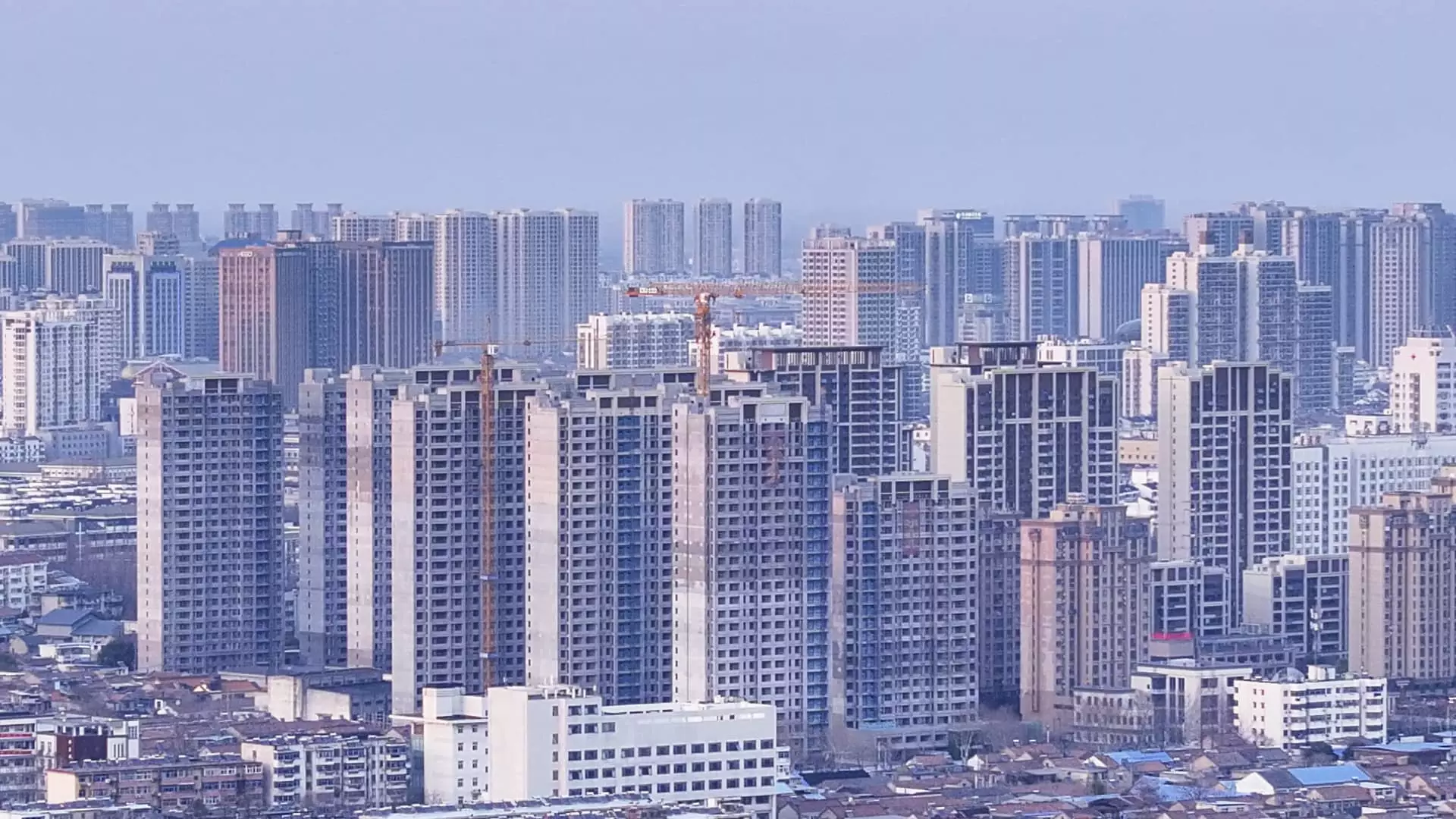The whispers of a recovery in China’s beleaguered real estate market have picked up intensity lately, with analysts from UBS indicating that a seismic shift might be on the horizon. John Lam, an esteemed voice on property trends in the Asia-Pacific region, notes a potential turning tide over the past few years. It doesn’t take a financial genius to recognize that after a protracted downward spiral — culminating in a market characterized by declining property values and soaring debt defaults — even the faintest glimmers of hope can take on an almost magnetic allure.
However, it’s paramount to approach this situation with a critical lens. While Lam mentions improved sales in major cities, it begs the question: are these localized positives truly reflective of broader trends, or merely mirages in an expansive desert of despair? If, indeed, it can be said that secondary home sales have risen by over 30% in five key locations, then one must consider the risks of overestimating this data. Does this incremental uptick signal a robust recovery, or is it a mere blip in a still volatile market?
Quantitative Measures: Ground Zero for Recovery
UBS’s projections that home prices might stabilize as early as 2026 offers cautious optimism. However, such forecasts are often fraught with uncertainties. Their analysis hinges upon four main factors: dwindling inventory, a surge in land price premiums, a rebound in secondary sales, and rising rents. Not to mention, only one of these indicators — rents — appears to have not yet improved. This lukewarm collection of metrics makes one wonder whether we are witnessing the dawn of genuine recovery mechanics or merely a cosmetic fixer-upper.
The Chinese property sector, once a juggernaut contributing to a quarter of the economy, now finds itself in a precarious state characterized by massive defaults among giants like Evergrande. The statistics surrounding property sales staggering, with an approximate halving in total sales since 2021, prompting government intervention and ambitious policy announcements. Yet, despite significant stimulus actions, the market remains in a slump so deep that even those well-versed in economics find it challenging to predict how and when recovery might occur.
Investor Psychology: The Missing Component
Observed improvements in secondary sales raise another critical question: do these transactions benefit the developers and the market as a whole? The reality is that real estate transactions traditionally enrich those involved in primary sales—the developers. What’s concerning is that the resilience observed in secondary sales does not necessarily translate to positive ramifications for the fundamental health of the market.
The sentiment around the need for a boost in consumer confidence is echoed by numerous analysts. Investor psychology is vital in understanding the real estate narrative. Without restored faith from consumers, which understandably dwindled during periods of economic uncertainty, any potential recovery can remain stunted. The struggle to rekindle that confidence could very well prove to be more challenging than the tangible economic indicators themselves.
The Foreign Angle: New Players or Flawed Strategies?
The influx of foreign investments could present an interesting twist in the story of China’s real estate market revival. Apparently, significant foreign players have been eyeing opportunities in the market, driven by the allure of affordable rental housing. However, could this foreign interest dilate the existing wounds or actually pave the way toward eventual healing? The venture established by Invesco with Ziroom, aiming to create affordable rental options, is commendable, but also problematic. What happens when foreign capital enters a turbulent market? Are we witnessing a strategic healing process or a desperate cash grab?
Leading analysts like Michelle Kwok note ten signs indicating that the market’s bottom may have been reached, including rising foreign involvement. But is this truly an intrinsic recovery, or is it artificially inflated by external investments? The concern here lies in the monopolization of opportunities by international stakeholders while locals face continued hardships.
The Robust Demand: Hope Amid Uncertainty
The broader implications of a stabilized property market reflect extensive societal concerns, especially considering that real estate contributes significantly to household wealth across China. While there are whispers of advancement, the ground realities paint a picture that is far more complex. The long-standing issues of affordability for most citizens, coupled with excessively high rental rates, continue to erode consumer morale.
Looking toward 2026 may be optimistic, but optimism must be guarded. Despite favorable signs, it’s essential to navigate these waters with an acute awareness of the larger socio-economic landscape. If the property sector doesn’t genuinely stabilize, then neither will the Chinese economy. The question remains: can we approach an inflection point where real recovery supersedes speculative optimism? Only time will tell.

